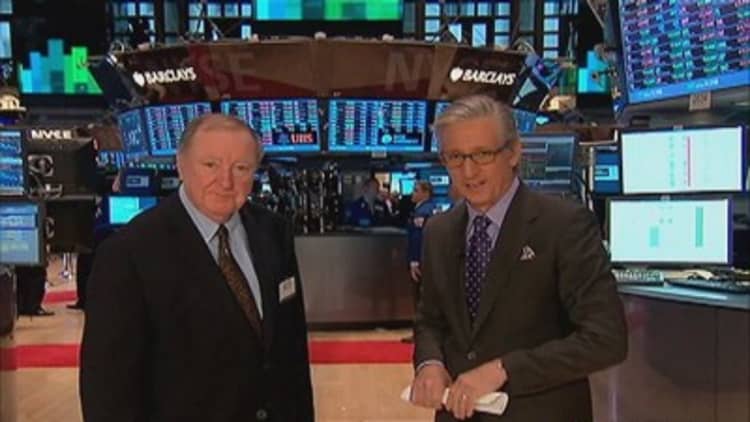
I do a daily Web interview with Art Cashin that appears midday on www.cnbc.com. In the 17 years Art and I have been together, I've always appreciated the knack he has for distilling complicated market trends into folksy commentary.
Art's been using a phrase in our interviews in the past few days that I think is especially pertinent—the "rationality put" to describe why stocks keep going up.
The "rationality put" means that traders believe that so far this year, everything has worked out, and traders have come to expect that everything will work out.
How else to note that the major indexes are knocking at the door of historic highs when growth is still weak and unemployment is still too high, and the is up 19 percent without a significant correction this year?
(Read more: Economists' latest forecast: Better, but not great)
Other than giving all the credit to the Federal Reserve, Art notes that the key event is: no disasters.
- Europe has not only not blown up, the data has gotten better.
- China, everyone feared, was on the verge of imploding a couple months ago, but it never did. The data improved.
- Syria was threatening to blow up into a global crisis, including a potential oil crisis, but the crisis has passed—for the moment.
- Larry Summers loomed as a potential crisis, but that too has passed.
- The Federal Reserve is about to begin its tapering process, but traders believe that this, too, will not turn into a crisis because it will start very modestly.
- The next potential crisis is the debt ceiling, but there is no concern about this either. The assumption is, some deal will be made.
Of course, "everything is and will work itself out" is a classic definition of complacency, and that's dangerous. The market is not pricing in any kind of bumpy road. The CBOE Volatility Index remains not far from multiyear lows.
So where do we go from here? Muddling along may be the best scenario for stocks. That's an argument that's been made by a number of strategists, including Ed Yardeni. He's said that the bull market could have more legs as long as the economy continues to neither boom nor bust. His argument: Booms lead to busts by creating excesses, but muddling along should be ideal for stocks.
(Read more: The bizarre reason why revenue growth will be tiny)
A key tenet of this "muddling along" thesis is that stock valuations will remain reasonable. If there is a meltup if and when Janet Yellen is nominated for Fed chair, that could be exactly the kind of bubble that guys like Yardeni—and Wharton's Jeremy Siegel—worry about.
Siegel was on our air Tuesday, and made a similar point by noting that while stocks are not cheap by historic valuations, they are cheap when compared to bonds.
(Read more: Siegel: 'Some juiceleft in this market')
Noting that the P/E multiple of the stock market was close to its historic norm of about 15, he went on to note that bonds are nowhere near their average yield. That means that Treasury prices would have to come down significantly (and yields go up) to match their historic average. In the past, when we have interest rates this low, P/E ratios have tended to be higher—18 or 19. That means stocks relative to bonds are still cheap, even though relative to history are average.
The contrarian argument, of course, is that bond prices should come down, at which point the equity premium that the stock market now enjoys should decline.
—By CNBC's Bob Pisani. Follow him on Twitter @BobPisani.


